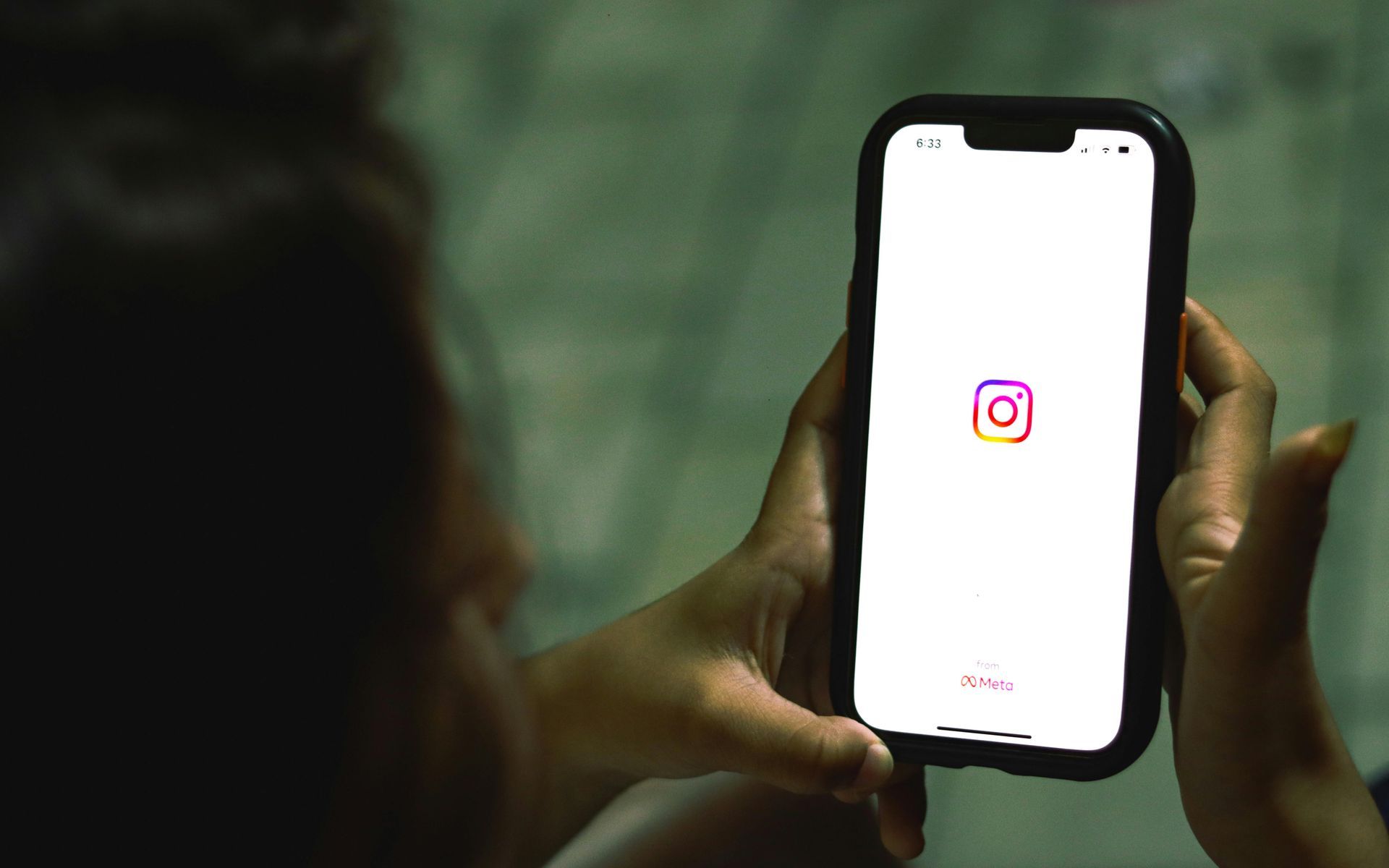Harnessing the Power of Email Marketing: Tools & Tips for Effective Communication
Streamlining Your Outreach: Advanced Tools and Strategies for Effective Email Communication

Email remains a cornerstone of business and personal communication. Its efficiency, especially when reaching multiple recipients, is unparalleled. Whether you're managing a marketing campaign, organizing community events, or simply keeping in touch with friends and family, understanding how to send an email to multiple people efficiently can greatly enhance your communication strategy. Here’s a look at some key tools and techniques, including email blaster software and email queuing, to help you send emails more effectively.
What is an Email Blaster?
An email blaster is a software that allows you to send an email to multiple people simultaneously. This tool is particularly useful for businesses and organizations looking to send newsletters, promotional offers, or updates to a large list of recipients. Email blasters come equipped with features like customizable templates, automatic subscriptions and unsubscriptions management, and detailed analytics to track the effectiveness of your emails.
Using an email blaster, marketers can easily segment their audiences based on demographics, past behavior, and
preferences, ensuring that the content is relevant and engaging. This targeted approach helps in maximizing the impact of your communication and increasing the return on investment.
How Email Queuing Works
Email queuing is another vital feature for both businesses and individuals. It allows you to prepare emails and schedule
them to be sent at a future date or time. This functionality is crucial when dealing with recipients in different time zones or when emails need to be sent out at peak engagement times.
Queuing emails helps in managing server load, preventing email servers from being overwhelmed by sending out large batches of emails simultaneously. This not only ensures smoother operation but also enhances deliverability, as ISPs are less likely to flag your email as spam.
How to Send an Email to Multiple People
- Using Standard Email Clients: Most email clients like Outlook, Gmail, or Apple Mail allow you to add multiple recipients in the 'To', 'CC', or 'BCC' fields. The 'BCC' option is particularly useful for mass emails as it hides the list of recipients, ensuring privacy.
- Utilizing Email Blaster Software: For more sophisticated campaigns, email blaster software can be used. These platforms provide tools to create more effective campaigns with templates, media integration, and automated responses.
- Implementing Email Queuing: When planning to send out emails to large numbers of recipients, consider using email queuing within your email service or specialized software to optimize delivery times and improve open rates.
How to Leverage Email Newsletters in Content Marketing
Email newsletters are a powerful tool in the content marketing arsenal, designed to engage your audience without asking for immediate action. Unlike traditional calls to action, newsletters focus on sharing valuable information that resonates with your audience.
Establish a Regular Schedule
Developing a consistent schedule for your newsletter—whether weekly, monthly, or quarterly—keeps your audience anticipating the next edition. Consistency not only aids in planning but also builds a routine for your readers, enhancing loyalty and engagement.
Craft Compelling Content
What should your newsletter contain? Consider what your audience would find beneficial or intriguing. Content could range from practical advice and industry insights to updates on community events and internal news. For example, if your audience includes HOA or condominium associations, you might share legal updates, discuss upcoming legislation, or answer common questions like "What qualifies an HOA for non-profit discounts?" or "What steps are taken if a board member resigns?"
Curate and Share Valuable Resources
If your newsletter serves primarily to share curated content, there are tools available to simplify the process. Services like Pocket or Evernote allow you to gather interesting links on the fly. Tools such as Goodbits provide functionality to compile these resources effortlessly into a cohesive newsletter, complete with annotations and organized layouts.
Utilize Compelling Formats and Tools
To ensure your newsletter is as visually appealing as it is informative, take advantage of the attractive templates offered by third-party email marketing services. These platforms often come with integrations that help consolidate content from social media feeds, saved articles, or RSS feeds, making it straightforward to curate comprehensive content collections.
Email newsletters go beyond simply disseminating information—they build connections, position your brand as a thought leader, and maintain engagement with your audience. By carefully crafting your content and utilizing available tools, newsletters become a cornerstone of effective content marketing strategies.
Efficiently Organizing and Sending Curated Links in Email Newsletters
Creating a compelling email newsletter with curated links can be streamlined with the right tools. Here’s how you can efficiently organize and send curated content:
- Utilize Dedicated Collection Tools: Start by using tools specifically designed to gather and organize links. These tools help you compile links into neat collections, minimizing the effort of manually copying and pasting or relying on traditional bookmarks.
- Browser Extensions for Seamless Collection: Many collection tools offer browser extensions. These allow you to save interesting links directly from your web browser with a simple click, without the hassle of managing numerous bookmarks or copying URLs.
- Integrate with Social Media and RSS Feeds: Expand your collection by integrating tools that can pull in your content from social media platforms, such as Twitter or Facebook, and from curated content saved in other applications like Pocket or your preferred RSS reader.
- Organize and Annotate: Once collected, organize these links into categories and add annotations for context. This ensures your newsletters are both informative and engaging, providing value to your audience by highlighting why these links are relevant.
- Leverage Built-in Templates: Use pre-designed templates that often come with these tools. Attractive layouts save time and make your newsletter appealing, ensuring a professional look with minimal effort.
- Email Marketing Tool Integration: Finally, seamlessly connect these collection tools with your preferred email marketing platform. This allows you to import your curated content directly into your newsletters and send them effortlessly to your subscribers.
By adopting these strategies, you can create professional and engaging email newsletters that stand out, keeping your audience informed with organized and curated content.
Expanding Reach: Integrating Social Media with Email Newsletters
Leveraging Twitter for Newsletter Promotion
Social media platforms offer unique opportunities to boost the reach of your email newsletters. For example, connecting your newsletter to your Twitter account can transform your profile into a promotional tool. By highlighting your subscription options directly on your Twitter profile, you can tap into your existing follower base without any additional cost. Notably, platforms like Revue allow seamless integration, offering features such as unlimited subscribers, essential compliance tools, and basic analytics. This setup is invaluable for those already active on Twitter, turning tweets into a direct channel for newsletter promotion. Simply including the newsletter link in a tweet will generate a preview, enhancing visibility and engagement.
LinkedIn's Approach to Newsletters
LinkedIn also presents innovative ways to integrate newsletters with your online presence. By using LinkedIn’s native tools, you can create newsletters that are instantly available to your connections and followers. This organic reach ensures that your professional network is notified and invited to subscribe as soon as the first issue is published. Additionally, LinkedIn allows for cross-platform sharing by enabling you to distribute your newsletter to other social media accounts. However, it's important to note that these newsletters are primarily accessible to LinkedIn users, making them particularly advantageous for professionals keen on maximizing their influence within this network.
Strategies for Integration and Broader Reach
- Automated Previews: Use platforms that generate automatic link previews to captivate potential subscribers and encourage them to explore further.
- Cross-Platform Sharing: Leverage the ability to share your newsletter on multiple social media platforms, broadening your audience reach.
- Engage Current Followers: Convert your current social media followers into newsletter subscribers by utilizing intuitive integration features offered by these platforms.
By strategically integrating social media with email newsletters, you not only enhance visibility but also engage directly with your target audience, thus expanding your reach in the digital landscape.
Integrating CRM with Email Marketing: A Powerful Partnership for Tracking Leads
CRM systems can revolutionize lead tracking and communications when paired with email marketing tools. These platforms are designed not only to streamline your follow-up processes but also to enhance client engagement through tailored communication.
Key Benefits of CRM and Email Marketing Integration
- Comprehensive Lead Management: A CRM allows you to monitor leads as they progress through the sales cycle. By integrating with an email marketing tool, you can automate follow-up emails, ensuring timely communication without manual tracking.
- Automated Journeys: Create automated email campaigns directly tied to client actions. For instance, once a prospect fills an intake form, an automatic sequence can send a welcome email, appointment confirmation, and even post-consultation reminders.
- Enhanced Analytics: Use the combined data from CRM and email campaigns to gain deeper insights. This can help refine your approach, by showing which emails led to conversions and how clients interact at different stages.
- Pipeline Forecasting: Many CRMs offer pipeline forecasting tools, allowing for a strategic overview of where clients stand in the process. Pairing this with email engagement data ensures that your communications are not only personalized but strategically timed.
Features to Look For
- Integration with Email Platforms: Ensure your CRM can seamlessly connect with popular email platforms like MailChimp or Constant Contact. This creates a unified system for managing client interactions across channels.
- Custom Workflow Automation: Choose systems that allow you to design specific workflow processes. This means you can tailor how and when clients receive follow-up emails or updates based on their unique needs or position within the sales funnel.
- Calendar and Case Management Sync: Linking your CRM with your calendar and case management software ensures appointments, tasks, and deadlines are in sync, further enhancing the efficiency of your communications.
With these integrations, the dynamic blend of CRM systems and email marketing tools not only simplifies processes but can significantly boost client conversions, ensuring every lead is nurtured appropriately.
Integrating Business Cards into a Digital Contact Manager
Integrating business cards and offline contact information into a digital contact manager can streamline your networking efforts and ensure you never misplace valuable contacts. Here's a step-by-step guide on how to do it effectively:
1. Choose the Right App
Select a reliable app on your smartphone to digitize and organize contact information. Popular choices include apps like Office Lens, Evernote, and Google Lens. These tools are designed to turn paper into digital data effortlessly.
2. Capture the Information
Use your chosen app to snap clear photos of business cards. Position the card on a flat surface, ensuring good lighting to enhance text readability. Most modern apps will automatically crop the image and enhance the text.
- Tip: Ensure that all necessary contact details, such as names, phone numbers, and emails, are legible and accurately captured.
3. Verify and Edit
Once the card is scanned, the app typically extracts the text for you. Review this information to make sure everything is correct. Apps often offer editing features, allowing you to make necessary adjustments or add notes before saving.
4. Save and Organize
Save the contact information in your digital contact manager. Categorize entries with tags or labels for easy retrieval later. Create separate folders or groups for professional connections, personal acquaintances, or events where these contacts were acquired.
5. Sync Across Devices
After digitizing, sync your contact manager with other devices. This ensures that you can access these entries whether on your phone, tablet, or computer, keeping your network at your fingertips.
6. Regular Updates
Periodically update your digital contacts, removing duplicates or outdated information. Keeping your contact list current aids in maintaining organized records, optimizing communication efforts.
By following these steps, you keep your network streamlined and accessible, maximizing the potential of each connection made offline.
Benefits of Using Advanced Email Tools
- Efficiency: Automation tools save time and effort in managing large-scale email campaigns.
- Scalability: As your list grows, these tools can easily scale to meet increased demands without a drop in performance.
- Analytics: Advanced tools provide valuable insights into how your emails are performing, who is opening them, and which links are being clicked.
- Personalization: Email blasters offer advanced personalization options, which are proven to increase engagement rates.
- Compliance: They help in managing compliance with regulations such as GDPR by handling subscriptions and unsubscriptions automatically.
When evaluating practice management applications, especially for their email marketing capabilities, it's important to focus on integration and functionality.
Key Features to Consider:
- Seamless CRM Integration: Ensure the application offers customer relationship management tools or the ability to integrate with existing CRM platforms. This helps in managing client interactions effectively.
- Email Marketing Integration: Look for compatibility with popular email marketing tools like Constant Contact or MailChimp. These integrations facilitate efficient communication and campaign management.
- Automated Campaign Tools: The ability to automate email campaigns can save time and enhance consistency in client communication.
- Analytics and Reporting: Make sure the application provides robust reporting features. This will help in measuring the success of your campaigns and making data-driven decisions.
- Customization Options: Flexibility to personalize email templates and client communication ensures that your messaging aligns with your brand identity.
By ensuring your practice management software includes these features, you can enhance your client engagement and marketing strategies effectively.
Benefits of Using LinkedIn for Email Newsletters
LinkedIn's newsletter feature allows you to engage directly with your professional network. As you launch your newsletter, your connections and followers are automatically invited to subscribe, ensuring your content reaches an already interested audience.
Creating a newsletter on LinkedIn is straightforward. Just navigate to ‘Write an article’ from the home page and select ‘Create a newsletter’. If you manage a company page and have administrative rights, you can even launch newsletters directly from your firm's page to enhance your brand's visibility.
Additionally, you can expand your reach by sharing the newsletter across other social media platforms. This feature makes LinkedIn a potent tool for professionals aiming to leverage their network and extend their influence.
Limitations of LinkedIn Newsletters
Despite its benefits, there are some limitations to consider. A major drawback is accessibility; LinkedIn newsletters are only available to LinkedIn members. This means that your content won’t reach individuals outside the platform, potentially restricting your audience.
While most professionals are likely to have LinkedIn accounts, if your target demographic includes people who might not use the platform, you may need to consider additional channels to ensure maximum impact. Overall, LinkedIn newsletters are particularly advantageous for those aiming to deepen their engagement within the platform’s professional community.
Tools for Gathering and Organizing Email Contacts
Building a robust email list is vital for effective marketing campaigns. Here are some tools you can use to streamline the process of gathering and organizing email contacts from various sources.
Collecting Email Addresses
- CRM and Website Forms: Start by leveraging customer relationship management (CRM) systems and website forms. These platforms allow you to automatically capture email addresses as users interact with your site or sign up for newsletters.
- Contact Management Systems: Decide on where to manage your email addresses. Options like spreadsheets, Outlook, Google Workspace, or specialized practice management applications are effective.
Email Parsing Tools
- Evercontact: This tool integrates with Gmail, Outlook, and other email services to automatically create and update contact details. It extracts information from email signatures and lets you export the data to email marketing platforms like MailChimp or Constant Contact.
- Copy2Contact: Operating since 2001, this tool helps capture contact details from signature blocks, documents, and websites. It seamlessly transfers this information into MS Outlook or Salesforce. While it requires a manual step—selecting the text and using a shortcut—it offers versatile integration options including iPhone apps.
Data Retrieval Services
- Contact Recovery: This service analyzes your email archives to gather contact details over a specified period. It's particularly useful if you've saved emails for years and want to extract all potential contact information.
Scanning Solutions
- Business Card Scanners: Don’t underestimate the power of scanning business cards. Apps like Office Lens, Evernote, or Google Lens transform physical cards into digital contacts, making them easy to incorporate into your contact systems.
Tips for Effective Organization
- Segmentation: Divide your contacts into categories such as current, potential, and past clients. This helps in sending targeted messages.
- Notes & Tags: Use tagging features in your contact management tool to attach notes like meeting dates, birthdays, or anniversaries. This adds a layer of personalization to your marketing outreach.
Utilize these tools to streamline the process of collecting and organizing email contacts, ensuring your marketing efforts are more efficient and effective.
Tools for Curating and Compiling Newsletter Content
Creating an engaging email newsletter can be simplified with the right tools. If your goal is to gather information and links that interest your audience, several applications can assist you in creating a polished and cohesive newsletter.
- Goodbits: This tool streamlines the process of curating content. It allows you to effortlessly gather links and organize them into collections. With its browser extension, you can save links directly from the web, eliminating the need for manual copy-pasting or bookmarking.
- Pocket: A popular choice for saving articles, videos, and links for later reading, Pocket can also be used to gather content for newsletters. Its integration with several platforms makes it a versatile choice.
- RSS Feeds: Use an RSS reader to aggregate your favorite blog posts and articles. This can be an effective way to keep your finger on the pulse of topics relevant to your audience.
- Social Media Platforms: Curate content from your social media posts or those of others. Many tools offer integration with Twitter and Facebook, allowing seamless collection of tweets and posts.
- Email Marketing Services: Many email marketing platforms come with built-in features to help curate and organize content. These services often provide customizable templates and easy-to-use design tools, making it simple to create aesthetically pleasing newsletters.
By leveraging these tools, you can ensure your newsletter remains engaging, informative, and easy to produce.
Understanding the Distinctive Roles of Email Campaigns vs. Newsletters
When considering email marketing strategies, it's crucial to differentiate between email campaigns and newsletters, as they serve unique purposes and employ distinct approaches.
Email Campaigns: Driving Action and Engagement
Email campaigns are designed with a clear goal in mind: to prompt immediate action from your audience. Whether you're targeting prospective leads, current clients, or even former customers, these campaigns typically include:
- Specific Calls to Action: Encouraging recipients to make a purchase, sign up for a webinar, or take advantage of a limited-time offer.
- Personalized Touchpoints: Crafting tailored messages based on data insights to enhance relevance and connection.
- Targeted Messaging: Often part of a series that guides the recipient through a sales funnel or re-engagement path.
The main objective is conversion, making every email a strategic step toward achieving your business growth targets.
Newsletters: Educating and Nurturing Relationships
On the other hand, newsletters are fundamentally about providing value through information. Their approach focuses on building and maintaining relationships by:
- Regular Updates: Delivering consistent content that keeps your audience informed about industry trends, company news, or valuable tips.
- Educational Content: Featuring articles, interviews, or insights designed to enrich the subscriber's knowledge without a direct sales push.
- Community Building: Creating a sense of connection and loyalty by regularly engaging with subscribers in a meaningful way.
The goal here is nurturing, aiming to keep your brand top-of-mind while enhancing customer loyalty and trust.
In essence, while email campaigns aim to convert, newsletters focus on educating and sustaining relationships over time. Balancing these two strategies can significantly amplify your overall email marketing success.
Final Thoughts
Effective email communication is about more than just sending messages; it’s about making sure those messages are received, read, and acted upon. With the right tools—like email blaster software and email queuing—you can ensure your emails not only reach their intended recipients but also make a significant impact. Whether you're learning how to send an email to multiple people for personal reasons or business purposes, these tools can help streamline your processes and enhance your communication effectiveness.












